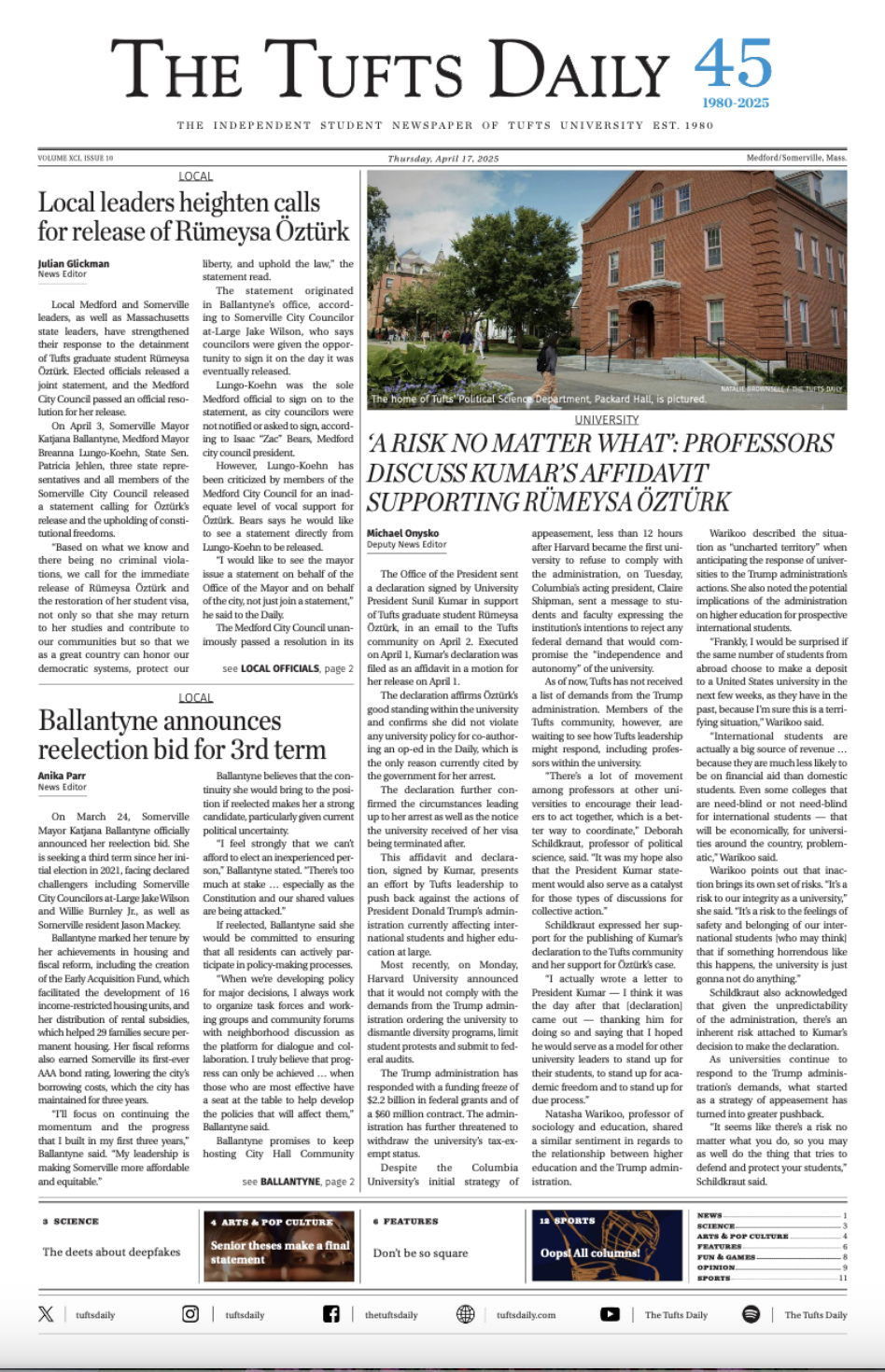On March 27, the current president of the United States of America signed an executive order to begin overhauling the Smithsonian Institution. This order comes from an effort to curb what has been called “woke ideology.” Paired with a crackdown on Diversity, Equity and Inclusivity programs, these new executive orders have instilled a very remarkable trait in our current administration: the ability to erase and change history.
What is the Smithsonian Institution?
The Smithsonian was first founded in 1846 by an Englishman named James Smithson. His donated funds for the institution were for one purpose: “under the name of the Smithsonian Institution, an establishment for the increase and diffusion of knowledge.” From its very inception, the Smithsonian sought to bring knowledge to the masses. According to the Smithsonian’s website, their vision is “through art, history, and culture, the Smithsonian strives to provide Americans and the world with the tools and information they need to forge Our Shared Future.”
The Smithsonian, unlike many of our current leaders, seeks to offer information to the average American on shared histories, from the founding of the country to the civil rights and women’s suffrage movements, and beyond as we move into our shared future. This is done through their research centers as well as the exhibition of art installations at the Smithsonian American Art Museum in Washington, D.C. Some of these exhibits include African American art with themes on personal identity, racism and the Civil Rights Movement, Native and Indigenous art critical to American culture and early American art on colonization and the emergence of the first thirteen nations.
The Smithsonian prides itself on not only shaping the future through knowledge, but also preserving the truth of our history in its 21 museums and 14 education and research centers. In fact, the Smithsonian is the world’s largest museum and educational complex, and continues to grow to this day. However, the new executive orders have created new bumps in the road for the institution.
What does the executive order outline?
The Executive Order “Restoring Truth and Sanity to American History” outlines five sections for reimagining the Smithsonian and its policies. In section one, the order states that in the past 10 years “our Nation’s unparalleled legacy of advancing liberty, individual rights, and human happiness is reconstructed as inherently racist, sexist, oppressive, or otherwise irredeemably flawed.” The section goes on to declare that the Smithsonian “promotes the view that race is not a biological reality but a social construct” and that the “Smithsonian American Women’s History Museum plans on celebrating the exploits of male athletes participating in women’s sports.”
In section two of the order, subtitled “Saving Our Smithsonian” outlines that the vice president will oversee removing “improper ideology” from the Smithsonian Institution and its properties. This oversight includes prohibiting exhibits that “degrade shared American values, divide Americans based on Race” or “recognize men as women in any respect.” The third section, “Restoring Independence Hall” aims to provide additional funding to improve Independence National Historical Park.
The fourth section, “Restoring Truth in American History” will establish whether “monuments, memorials, statues, markers … have been removed or changed to perpetuate a false reconstruction of American history” and subsequently “take action to reinstate the pre-existing monuments, memorials, statues, markers, or similar properties.” The fifth and final section, “General Provisions” clarifies that the executive order does not interfere with any existing legal powers and that no individual can sue the government based on the order as it does not grant any individual rights.
This executive order outlines the current administration’s efforts to create a different shared history through the Smithsonian Institution; one that removes any American history that delves into the racism, sexism and transphobia experienced by much of our nation’s population. “Restoring Truth and Sanity to American History” aims to remove truth and encourage bigotry, but fails to address how significant figures in our history have contributed to the oppression of the people and fails to recognize the diverse set of experiences that have shaped this country.
The Smithsonian has recently aimed to create a more inclusive and modern view of American history shaped by diverse experiences. The institution has worked hard to balance the past with an ideal hope for the future by educating Americans on topics that are heavily researched. The institution works to reverse biased ideas by providing Americans, and the world, with all the facts, including that race is a social construct — as agreed upon by scientists. The Smithsonian has outlined on their website that it aims to be a “trusted source that explores and grapples with what it means to be an American,” uncovering the good and the bad of our nation.
What does all of this mean?
The president’s executive order is not intended to give the nation’s population the truthful version of our past. Its intentions are to censor the disgraceful role our country has had in promoting flawed beliefs and setting up systems that benefit the cisgender, heterosexual white male. Instead of choosing to reckon with this past and create a better system for the nation, the current administration has chosen to reject and redact our history.
In the current day and age, art is made up of an array of perspectives, themes and styles. Much of contemporary art has turned its eyes on cultural and personal identities, as well as focus on nature, sustainability and ethical art. Cracking down on these forms of art that highlight a diverse experience leads to censorship of art that depicts history, including artworks that take a political stance. This ‘cleansing’ of American art and culture within the Smithsonian is reminiscent of ’30s Germany.
By not allowing Americans to criticize and doubt their shared history and current culture, the current administration is fostering values of ignorance and unawareness of the society we reside in. The Smithsonian Institution and its goals are a clear, shared reminder of our past. The more we disregard the truth of where we come from, the more likely we are to make the same mistakes.
To believe that the United States is a perfect country where everyone is and has been treated fairly on merit is a completely false notion only bought into by those who benefit from the system. Our national dialogue and country as a whole will only improve if we have hard conversations about our mistakes and push for a better future while understanding the past. This includes using art to explore the racism, sexism and bigotry that has been swept under the rug. This does not mean art and our institutions cannot celebrate the good aspects of American history. However, to ignore the rotten parts of this nation is to buy into a false image of the world we live in, and continue to rot from the inside out.
As philosopher George Santayana once said, “Those who cannot remember the past are condemned to repeat it.”






